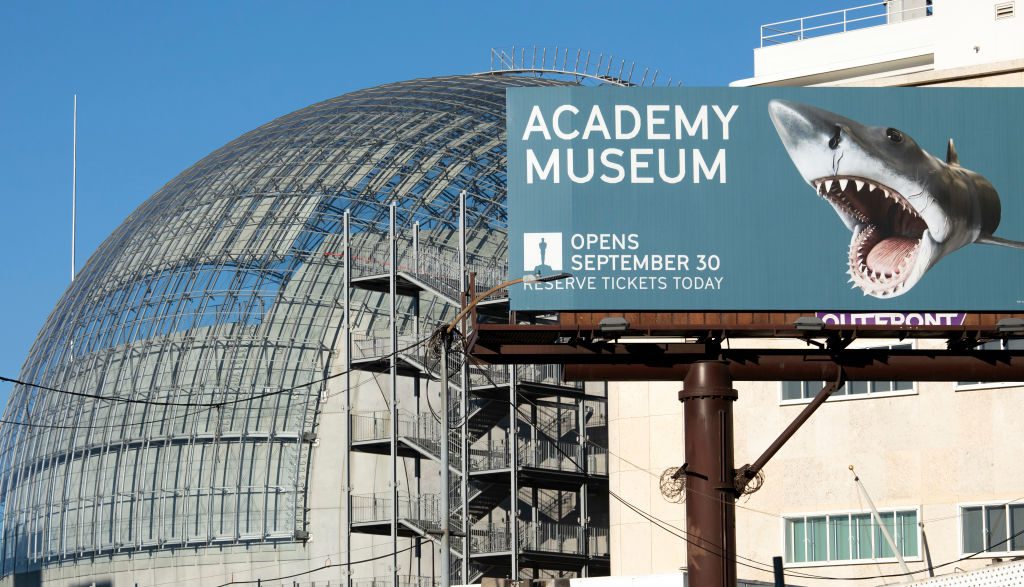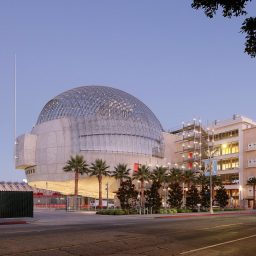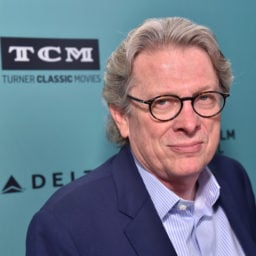After numerous delays, the Academy Museum of Motion Pictures finally opened its doors this week, as members of the public were invited into the new seven-story, Renzo Piano-designed shrine to movie magic for the first time.
The project has always been a high-profile one, and not just because of Hollywood’s outsized cultural influence or the names involved in bringing the thing to life (Tom Hanks, Steven Spielberg, and Bob Iger, to name a few).
The stakes were high: the industry, still reckoning with the problems laid bare by campaigns like “#MeToo” and “#OscarsSoWhite,” now has another identity crisis on its hands as the pandemic has fundamentally changed the way films are financed and experienced. Reverence for the institution is fading, evidenced by the lowest-ever ratings achieved by the most recent Academy Awards.
As Janelle Zara recently wrote, the entire way the museum tells cinema history has been reimagined to meet these questions and create a broader, more contemporary, and perhaps more engaging view of its subject matter. That’s not to say, though, that you won’t also find pieces of memorabilia from your favorite movies on display.
Dorothy’s ruby slippers, Okoye’s Black Panther outfit, and an animatronic E.T.—among many other greatest hits—are all on view as the public gets its first glimpse at the experience, alongside debut exhibitions devoted to filmmakers Hayao Miyazaki and Pedro Almodóvar.
To illustrate the scope of the museum’s vision, we asked collections curator Nathalie Morris to highlight a few of her favorite objects from the collection. Below are seven novel movie artifacts selected by Morris that give a sense of what to expect from the Academy Museum of Motion Pictures, along with the curator’s commentary on each.
1) Phantasmagoria Magic Lantern
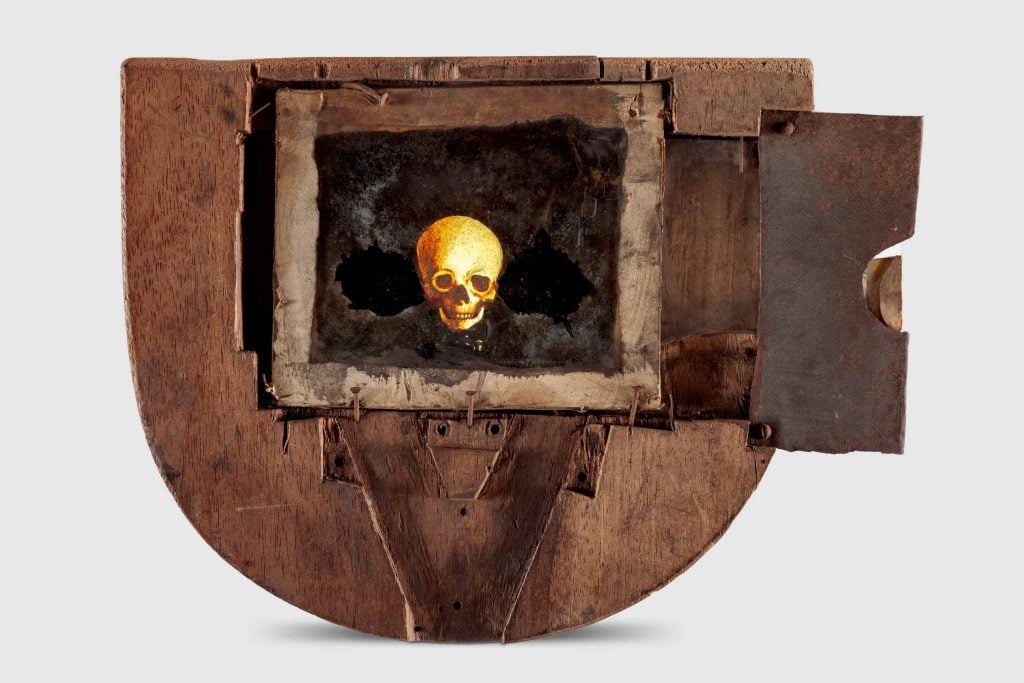
© Academy Museum Foundation.
“Produced by English inventor Phillip Carpenter around 1821, this quirky-looking lantern was designed for rear, as opposed to front projection. It could create spooky apparitions and make specters appear and disappear at will, a defining feature of the phantasmagoria show, a precursor to the modern horror genre. It’s a significant part of the centuries-long story of how optical devices have been used to tell stories, enthrall viewers and bring still images to life and is on show as part of ‘The Path to Cinema’, alongside slides (such as the one pictured above), shadow puppets, zoetropes and more.”
2) Max Factor Pan-Cake Make-Ups
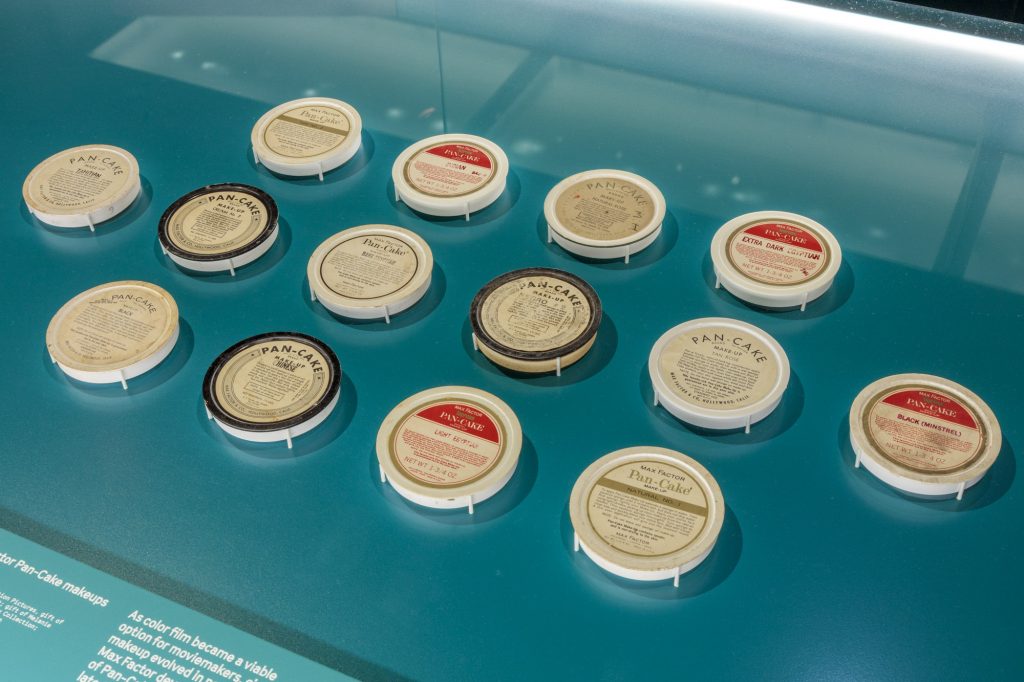
Max Factor Pan-Cake make-ups on display in the Acadamy Museum. Photo: Joshua White. ©Academy Museum Foundation.
“Max Factor was an instrumental figure in the development of make-up for cinema, creating new products to match advances in film technology. He invented Pan-Cake make-up in response to the evolution of Technicolor in the 1930s, to ensure actors appeared with natural complexions on screen. While we salute his technical genius, we also want to highlight how these products reflect Hollywood’s problematic relationship to race, casting, and performance. Shades on display include ‘Light Egyptian,’ ‘Dark Egyptian,’ ‘Indian’ and ‘Chinese’—which were largely intended for use on white actors. Most problematic, of course, is the shade ‘Minstrel,’ an explicit reference to the long-standing practice of blackface.
The display of these pieces (curated by my colleagues Ana Santiago and Dara Jaffe as part of our ‘Identity’ gallery) is accompanied by a slideshow that contextualizes them within the history of racist casting and make-up practices. This explores the tradition of minstrelsy, racial stereotyping, and the long-standing practice of casting white actors to play people of color—an accepted norm that for a long time shut non-white actors out of roles and opportunities. For instance, Lena Horne was one of the few leading Black actresses in classical-era Hollywood. She lost out on the role of Julie in Showboat (1951) to Ava Gardner, who played a Black woman passing as white, wearing make-up to darken her skin. It’s only by confronting histories such as these that we can fully understand the past and strive for a more equitable future.”
3) Technicolor Camera From 1937
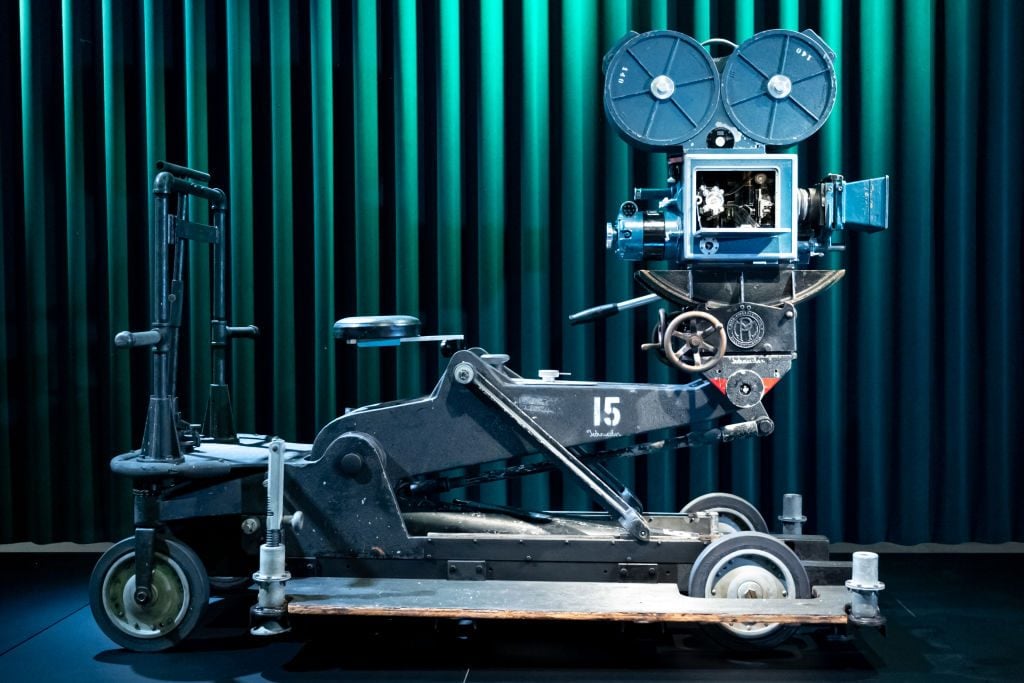
A Technicolor camera on display at the new Academy Museum in Los Angeles, CA Tuesday, September 21, 2021. Photo: David Crane/MediaNews Group/Los Angeles Daily News via Getty Images.
“Technicolor was a color camera system that shot some of the most visually stunning movies of all time, including The Wizard of Oz. Introduced in 1932, three-strip Technicolor represented a huge advance in motion picture technology, enabling an expressive and richly saturated palette for filmmakers to work with. The camera itself is also an elegant and beautiful piece of equipment and no collection of film technology would be complete without one.”
4) Olympia Typewriter Used by Joseph Stefano
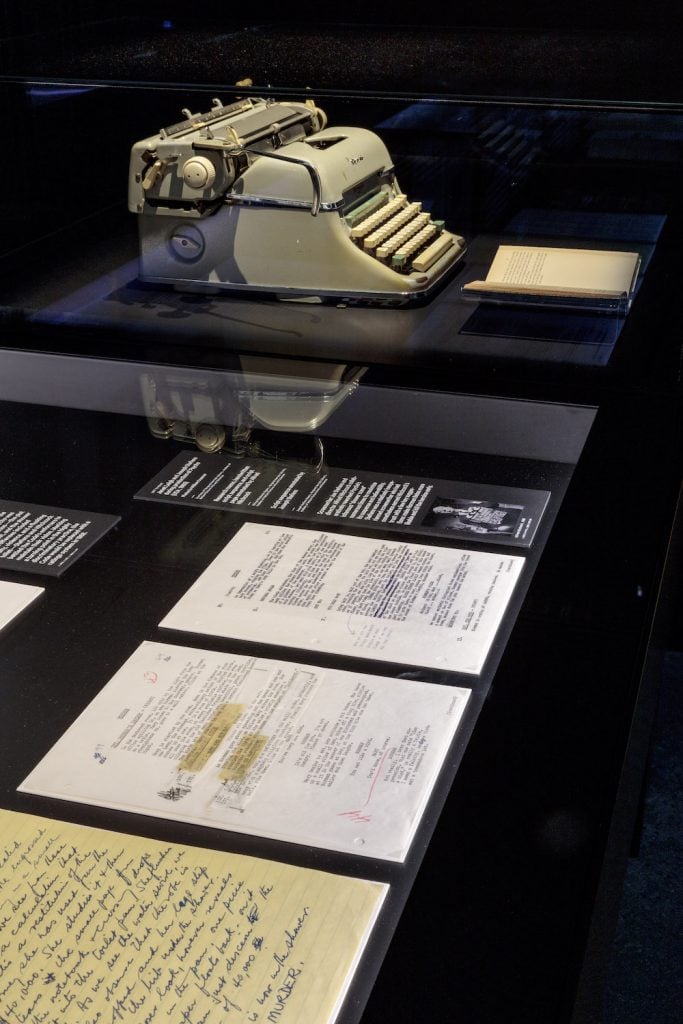
The typewriter used by Psycho screenwriter Joseph Stefano. Photo: Joshua White. ©Academy Museum Foundation.
“This typewriter was used by then-novice screenwriter Joseph Stefano to write the script for Alfred Hitchcock’s Psycho (1960). Adapted from the 1959 novel by Robert Bloch, the film challenged the censors, terrified audiences and revitalized Hitchcock’s career, making him relevant to a new generation. As well playing a part in one of the most influential films of all time, the typewriter also serves to represent a key tool of the screenwriter (or the studio typing pool) before the introduction of personal computers and screenwriting software from the 1980s onwards.”
5) Dress Worn by Rita Moreno to the Academy Awards in 1962 and 2018
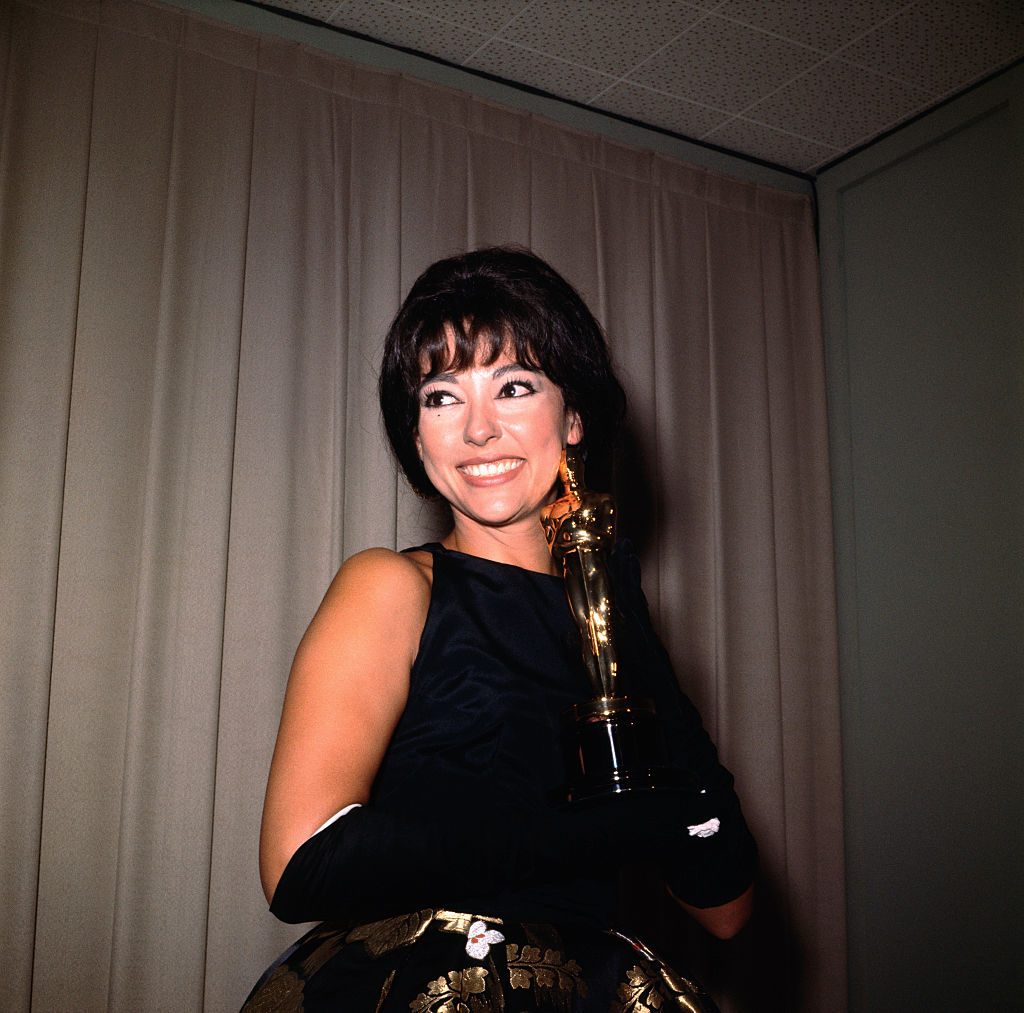
Actress Rita Moreno with her Academy Award in 1962. Courtesy of Getty Images.
“The Academy Museum has a growing collection of significant Academy Awards red carpet fashions. This dress was worn by Rita Moreno, the first Latina actress to win an Academy Award, when she won Best Supporting Actress for the role of Anita in West Side Story (1961). Moreno accepted her statuette in this black and gold dress designed by Filipino fashion legend Pitoy Moreno. She wore the same dress again, altered to become strapless and accessorized with gloves and jewelry, when she was a presenter in 2018.”
6) Costume Worn by Diana Ross in Lady Sings the Blues (1972)
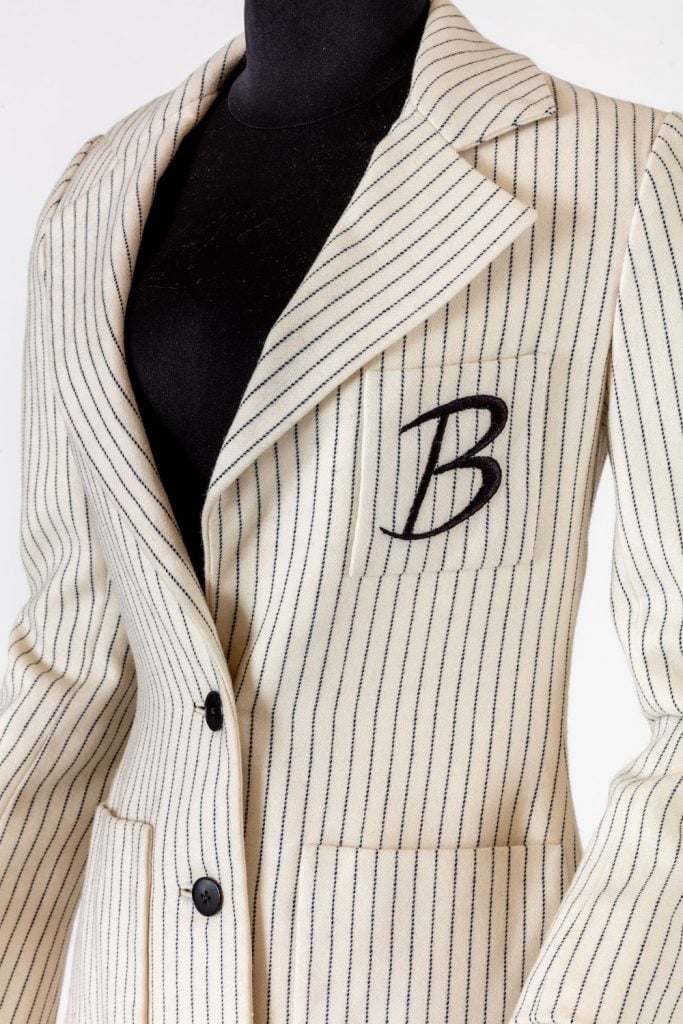
A costume worn by Diana Ross as Billie Holiday in Lady Sings the Blues (1972). Photo: Joshua White. © Academy Museum Foundation.
“Diana Ross wore this skirt suit in her Oscar-nominated performance as Billie Holiday in Lady Sings the Blues. Originally Norma Koch was to design all the costumes for the film, but shortly before filming commenced Ross had Bob Mackie and Ray Aghayan brought on to design her costumes (they had previously created many of her looks for concerts and television appearances). Given the short time window, Mackie and Aghayan were unable to make all of her costumes from scratch. This piece was inspired by Holiday’s style in the late ’40s/early ’50s, particularly in the film New Orleans (1947). It was selected from stock at Paramount studios and customized with the distinctive ‘B’ on the lapel, a great example of how practicality, problem-solving, and creativity come together in film costuming.”
7) Kazu Hiro Prosthetics for Charlize Theron in Bombshell (2019)
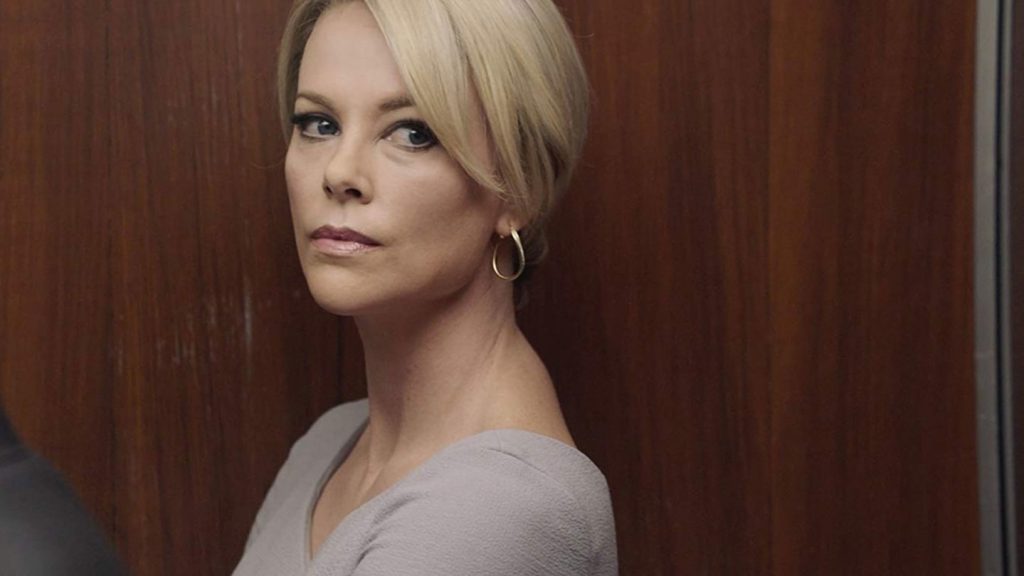
Charlize Theron in Bombshell (2019). Courtesy of Annapurna Pictures.
“Special effects make-up artist Kazu Hiro transformed Charlize Theron into Fox News anchor Megyn Kelly for 2019’s Bombshell. If you look carefully at these pieces (with the help of the accompanying interview with Hiro) you can understand the way in which he altered Theron’s chin, jawline, eyelids, eye color, and even nostrils to support her tour de force performance. Theron was nominated for an Oscar for her role, and Hiro, along with Vivian Baker and hair designer Anne Morgan, took home the award for Makeup and Hairstyling.”
